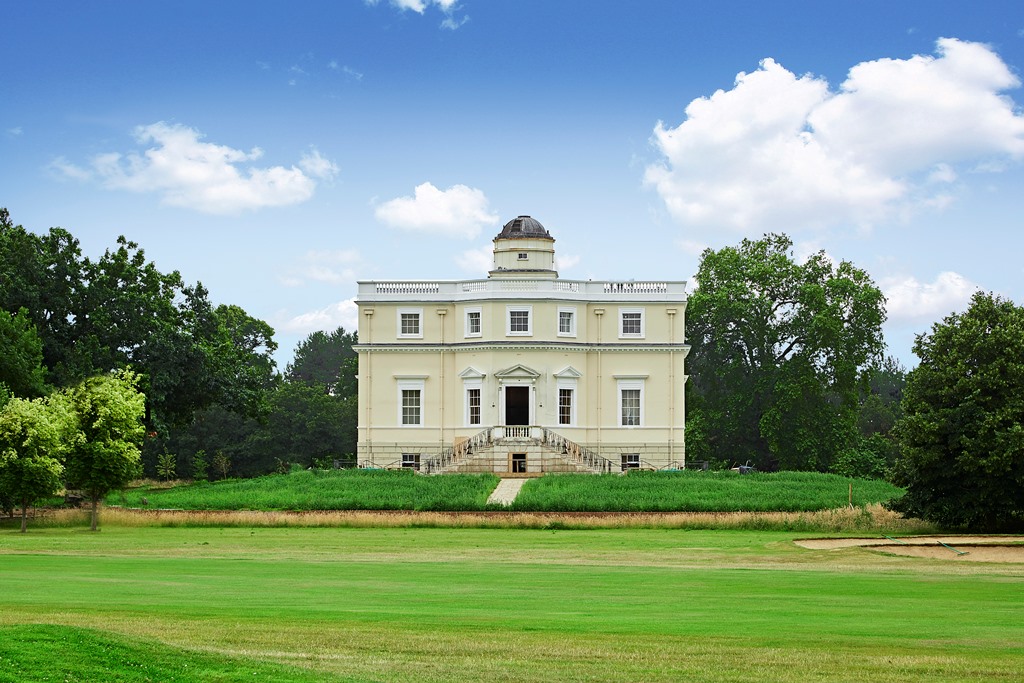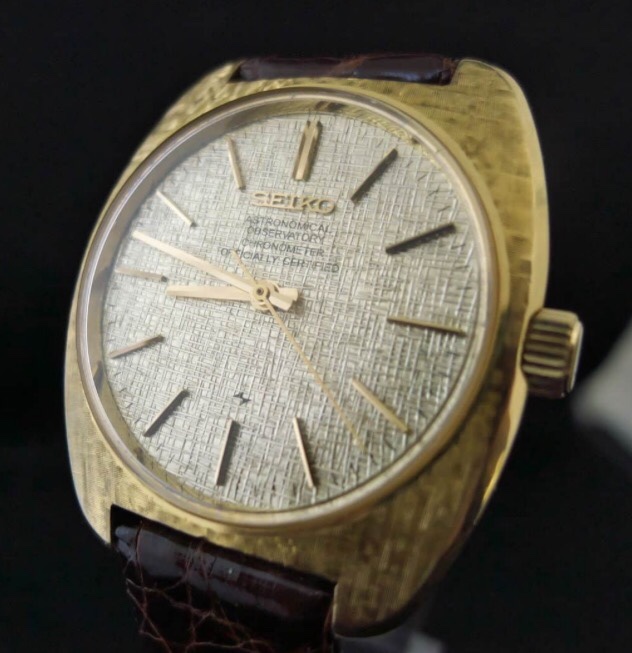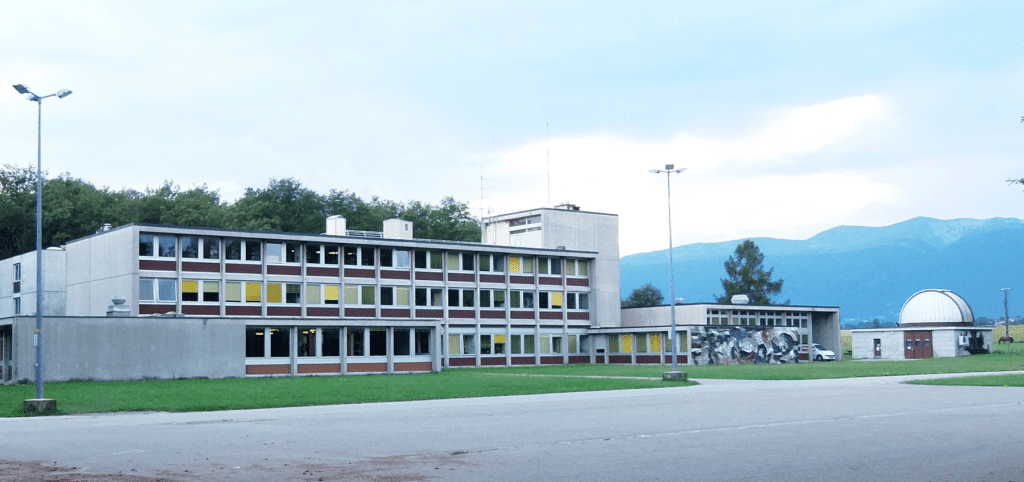Seiko And The Observatory Chronometer Trials
Much like The Olympics, which is used to determine best on best, the watch industry had their own competition too, called Observatory Chronometer Trials, which tested brand vs. brand head on and more specifically, a brand could enter in a specific movement, for testing. What did the observatories test? The role of the Observatories was to assess the accuracy of mechanical timepieces. In their day, observatory chronometer trials were important and prestigious events, in the world of watches.

For example, The King’s Observatory, completed in 1769, was a grand building founded by King George III and was initially used for astronomical purposes. By 1842, the then empty building was taken on by the British Association for the Advancement of Science and became widely known as the Kew Observatory. In the early 1850s, the facility began performing a role in assessing and rating different watches, barometers, thermometers, chronometers, even sextants and other scientific instruments, for one purpose only, for accuracy. The goal being if an instrument passed tests it was then awarded a “Kew Certificate”, a hallmark of excellence. Sailors, at the time, were using marine navigation tools, rated by the observatories, to determine their speed, position and direction of travel began adopted the use of mechanical timepieces as their accuracy was vitally important. Chronometer tests at the observatory continued until 1912, when the testing process was moved to the National Physical Laboratory, or NPL, at nearby Teddington. The NPL is the national measurement standards laboratory of the United Kingdom. The Kew-Teddington class “A” trials rated 33,200 watches and continued until 1951.
Japan organized their own domestic chronometer competitions, in the 1950s, which ended in 1960. By the end of the Japanese competition it was determined that the domestically produced models, like Seiko, had significantly increased their accuracy, quality and reliability and could compete with other internationally available models.
The European Observatories, at this same time, were testing the world best chronometers for 45 days. Each movement was tested in five positions and two temperatures. In 1959, the Neuchâtel Swiss Observatory opened up to entrants from outside of Europe. After this rule change the competition was branded as ‘International’ but at this point there were very few participants from countries other than Switzerland. In 1962, Seiko contacted the Observatory and was advised that ‘We welcome participation from Japan’, they then provided the relevant materials and entered.
In their first year of their competition, in 1963, Seiko entered Suwa-Seikosha in the wrist watch category placing in 144th position and did not receive an award. In their second year of their competition, in 1964, Seiko also entered Daini-Seikosha in the wrist watch category placing in 153rd position and did not receive an award.
Cue the comeback!
After the second competition, Seiko made an adjustment to their balance springs and began to use Permalloy, a highly magnetic resistant material, for their watch cases and dials. They also began using a magnetic resistant case to transport the watches. They wanted to avoid anything that could magnetize their watches and impact performance.
In 1965, Seiko entered Suwa-Seikosha in the wrist watch category, submitting 14 watches, with a top placing of 114th position and receiving one award. That same year, Seiko also entered Daini-Seikosha in the wrist watch category, submitting 13 watches, with a top placing of 124th position and receiving two awards.
In 1966, Seiko entered Suwa-Seikosha in the wrist watch category, submitting 12 watches, with a top placing of 104th position and receiving nine awards. That same year, Seiko also entered Daini-Seikosha in the wrist watch category, submitting 25 watches, with a top placing of 9th position and receiving 23 awards. Seiko was elated as they’d finally broke the top ten, however, their push to improve kept going.
In 1967, Seiko entered Suwa-Seikosha in the wrist watch category, submitting 27 watches, with a top placing of 12th position and all but one watch receiving awards. That same year, Seiko also entered Daini-Seikosha in the wrist watch category, submitting 36 watches, with a top placing of 4th position and all of their watches receiving awards.
In just 5 short years, Seiko Suwa factory had increased from 144th to 12th position while the Seiko Daini factory had increased from the 153rd position to 4th place.
The Council of Neuchâtel in Switzerland announced, on May 05, 1968, that the wrist watch category of that year’s competition was to be cancelled, however, other categories were to continue. The competition planned to return the following year and reevaluate the rules to more accurately represent actual production watches in the market.

The Observatory still accepted submissions of movements to obtain the standard Chronometer Certificates and over the next three years Seiko Daini-Seikosha submitted 283 movements for certification and 226 were awarded chronometer status. The movements were built into The Seiko Astronomical Observatory Chronometer watch which was designed to be a watch that could be worn everyday and was expected to have the lifespan of a normal high quality watch. Only 226, of these prestigious watches, were sold publicly making them one of the most collectible and rarest of all Seiko watches.

In 1968, the Geneva Observatory wrist watch competition placed their top three scoring positions to quartz movements from CEH (Centre Electronique Horloger), a compilation of Swiss manufacturers that was based in Neuchâtel. The fourth to tenth positions were all awarded to Seiko Suwa-Seikosha which were all using mechanical movements. When the measurements were calculated using the Neuchâtel N-Score system the top Seiko entry had a lower score than the all-time previous record set for a mechanical watch, scored at the Geneva Observatory competition, won by Omega, in 1967.
After potentially threatening Seiko victories, in 1968, the Geneva Observatory cancelled its contests.
A group of Swiss watch industry brands formally approached René Meylan, Neuchâtel’s industry minister, in 1972, asking for an end to their trials; the Japanese were sweeping the board. Maylan’s response was ‘the whole point of the competition was for the best to win’. After the Swiss brands threatened to boycott, the Observatory competitions were suspended and never revived.
In 2017, the Neuchâtel Observatory Chronometer Database went online and provided a comprehensive compilation of all 3356 wristwatch movements ever submitted to the Neuchâtel Observatory, for testing, between the years 1945 to 1967, the golden age of mechanical wristwatch chronometry.
The Neuchâtel Observatory Chronometer Database reminds us that, in their day, Observatory chronometer trials were important and prestigious events, in the world of watches.
Times Ticking has been in operation for more than 30 years, since 1982. We have performed watch repair for customers both locally and internationally. If it Ticks! We KNOW it! Our team of watch repair technicians have a combined experience in watchmaking of over 120 years.

